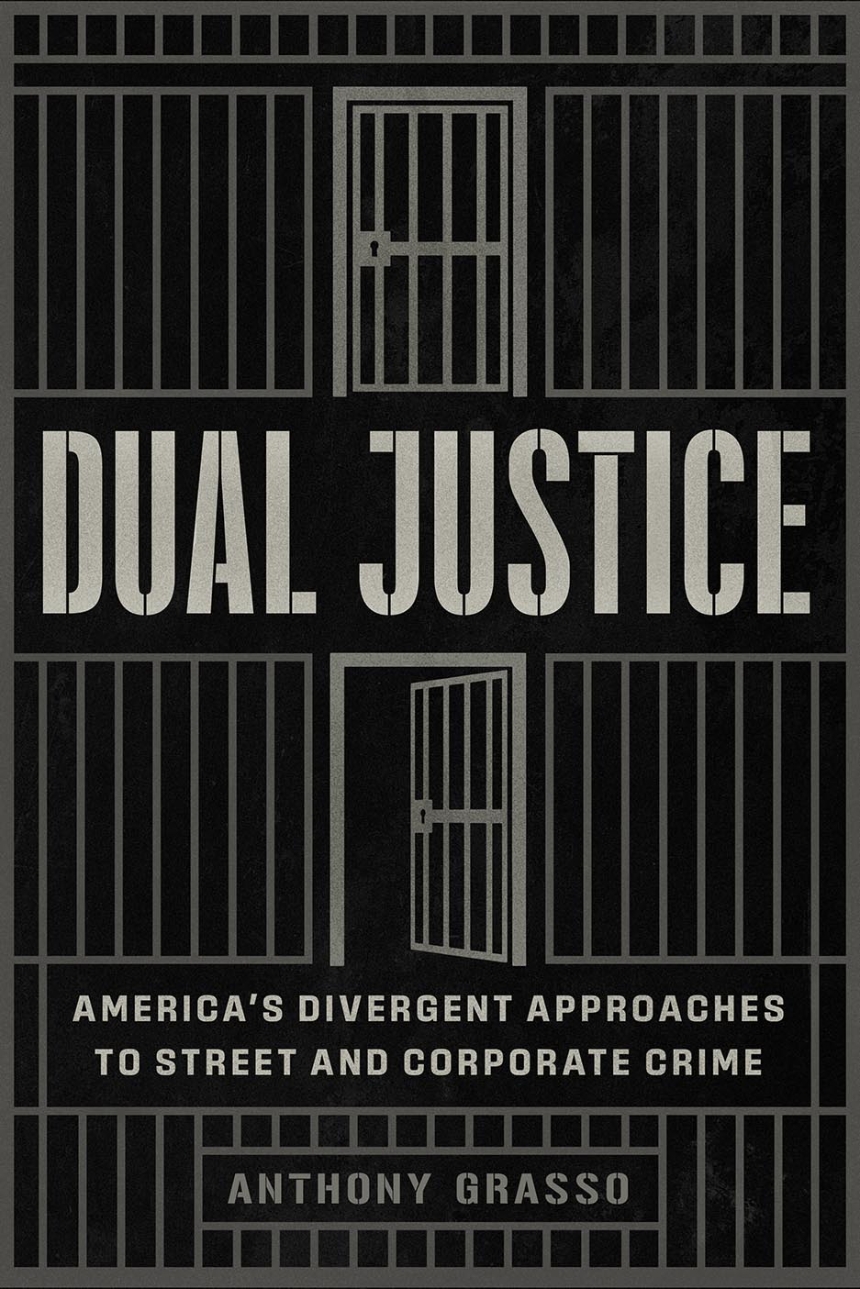Dual Justice
America’s Divergent Approaches to Street and Corporate Crime
Dual Justice
America’s Divergent Approaches to Street and Corporate Crime
A far-reaching examination of how America came to treat street and corporate crime so differently.
While America incarcerates its most marginalized citizens at an unparalleled rate, the nation has never developed the capacity to consistently prosecute corporate wrongdoing. Dual Justice unearths the intertwined histories of these two phenomena and reveals that they constitute more than just modern hypocrisy.
By examining the carceral and regulatory states’ evolutions from 1870 through today, Anthony Grasso shows that America’s divergent approaches to street and corporate crime share common, self-reinforcing origins. During the Progressive Era, scholars and lawmakers championed naturalized theories of human difference to justify instituting punitive measures for poor offenders and regulatory controls for corporate lawbreakers. These ideas laid the foundation for dual justice systems: criminal justice institutions harshly governing street crime and regulatory institutions governing corporate misconduct.
Since then, criminal justice and regulatory institutions have developed in tandem to reinforce politically constructed understandings about who counts as a criminal. Grasso analyzes the intellectual history, policy debates, and state and federal institutional reforms that consolidated these ideas, along with their racial and class biases, into America’s legal system.
336 pages | 2 halftones, 1 tables | 6 x 9 | © 2024
Chicago Series in Law and Society
Law and Legal Studies: Law and Society
Political Science: American Government and Politics, Race and Politics
Reviews
Table of Contents
2. Ideological Formation: Constructing Rehabilitative and Regulatory Ideologies
3. Entrenching Rehabilitation: Pathology and Punishment in the Progressive Era
4. Entrenching Regulation: Crime, Politics, and the Origins of the Regulatory State
5. The Persistence of Rehabilitation: Criminality, Incorrigibility, and Twentieth-Century Politics
6. The Persistence of Regulation: Regulatory Responses to Corporate Lawbreaking
7. Reunifying Rehabilitative and Regulatory Ideologies in the Twenty-First Century
8. Deconstructing Ideology and Criminality: Possibilities for a Different Future
Acknowledgments
Notes
Works Cited
Index
